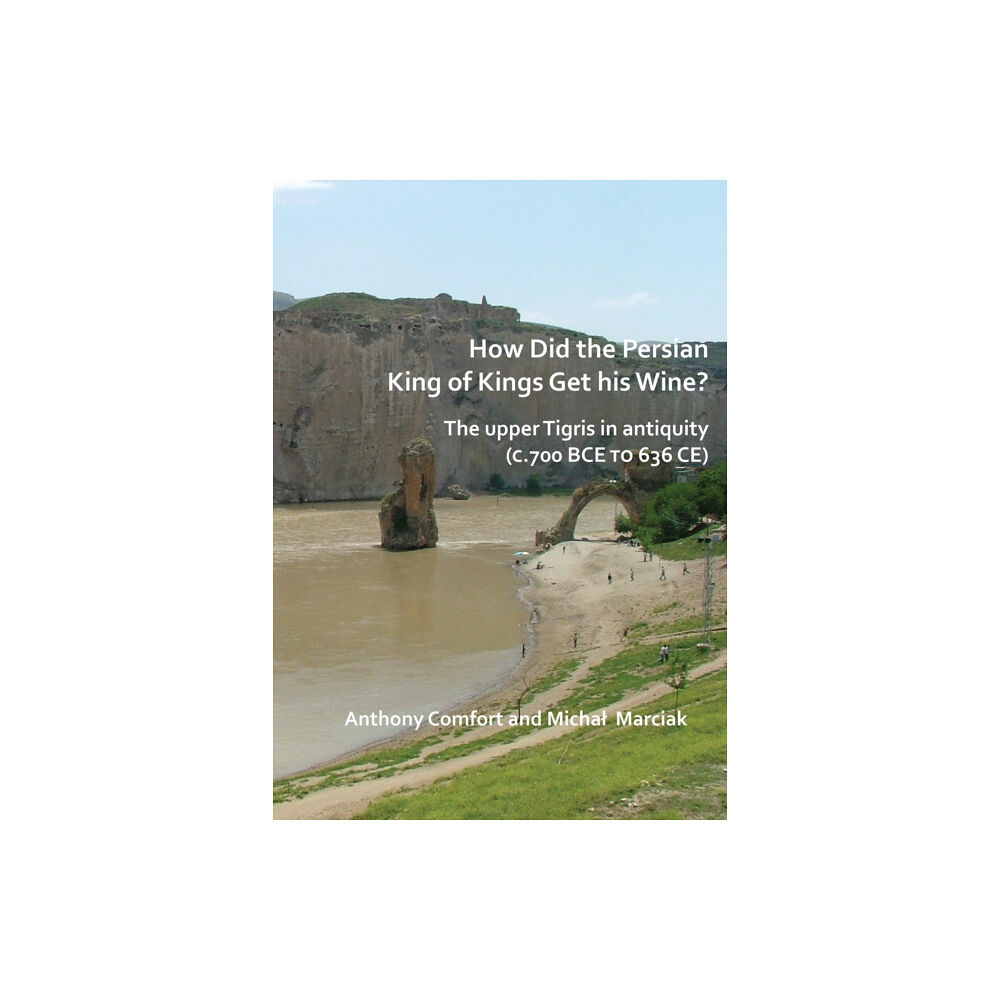- Hem
- Böcker
- Kurslitteratur
- Historia
- How did the Persian King of Kings Get His Wine? The upper Tigris in antiquity (c.700 BCE to 636 CE) (häftad, eng)

How did the Persian King of Kings Get His Wine? The upper Tigris in antiquity (c.700 BCE to 636 CE) (häftad, eng)
How did the Persian King of Kings Get His Wine? the upper Tigris in antiquity (c.700 BCE to 636 CE)'' explores the upper valley of the Tigri...
479 kr
525 kr
Slut i lager
- Fri frakt
Fri frakt över 299:-
Snabb leverans
Alltid låga priser
Produktbeskrivning
How did the Persian King of Kings Get His Wine? the upper Tigris in antiquity (c.700 BCE to 636 CE)'' explores the upper valley of the Tigris during antiquity. The area is little known to scholarship, and study is currently handicapped by the security situation in southeast Turkey and by the completion during 2018 of the Ilısu dam.
The reservoir being created will drown a large part of the valley and will destroy many archaeological sites, some of which have not been investigated. The course of the upper Tigris discussed here is the section from Mosul up to its source north of Diyarbakır; the monograph describes the history of the river valley from the end of the Late Assyrian empire through to the Arab conquests, thus including the conflicts between Rome and Persia.
It considers the transport network by river and road and provides an assessment of the damage to cultural heritage caused both by the Saddam dam (also known as the Eski Mosul dam) in Iraq and by the Ilısu dam in south-east Turkey. A catalogue describes the sites important during the long period under review in and around the valley.
During the period reviewed this area was strategically important for Assyria’s relations with its northern neighbours, for the Hellenistic world’s relations with Persia and for Roman relations with first the kingdom of Parthia and then with Sassanian Persia.
The reservoir being created will drown a large part of the valley and will destroy many archaeological sites, some of which have not been investigated. The course of the upper Tigris discussed here is the section from Mosul up to its source north of Diyarbakır; the monograph describes the history of the river valley from the end of the Late Assyrian empire through to the Arab conquests, thus including the conflicts between Rome and Persia.
It considers the transport network by river and road and provides an assessment of the damage to cultural heritage caused both by the Saddam dam (also known as the Eski Mosul dam) in Iraq and by the Ilısu dam in south-east Turkey. A catalogue describes the sites important during the long period under review in and around the valley.
During the period reviewed this area was strategically important for Assyria’s relations with its northern neighbours, for the Hellenistic world’s relations with Persia and for Roman relations with first the kingdom of Parthia and then with Sassanian Persia.
| Format | Häftad |
| Omfång | 156 sidor |
| Språk | Engelska |
| Förlag | Archaeopress |
| Utgivningsdatum | 2018-08-13 |
| ISBN | 9781784919566 |
Specifikation
Böcker
- Häftad, 156, Engelska, Archaeopress, 2018-08-13, 9781784919566
Leverans
Vi erbjuder flera smidiga leveransalternativ beroende på ditt postnummer, såsom Budbee Box, Early Bird, Instabox och DB Schenker. Vid köp över 299 kr är leveransen kostnadsfri, annars tillkommer en fraktavgift från 29 kr. Välj det alternativ som passar dig bäst för en bekväm leverans.
Betalning
Du kan betala tryggt och enkelt via Avarda med flera alternativ: Swish för snabb betalning, kortbetalning med VISA eller MasterCard, faktura med 30 dagars betalningstid, eller konto för flexibel delbetalning.
Specifikation
Böcker
- Format Häftad
- Antal sidor 156
- Språk Engelska
- Förlag Archaeopress
- Utgivningsdatum 2018-08-13
- ISBN 9781784919566
